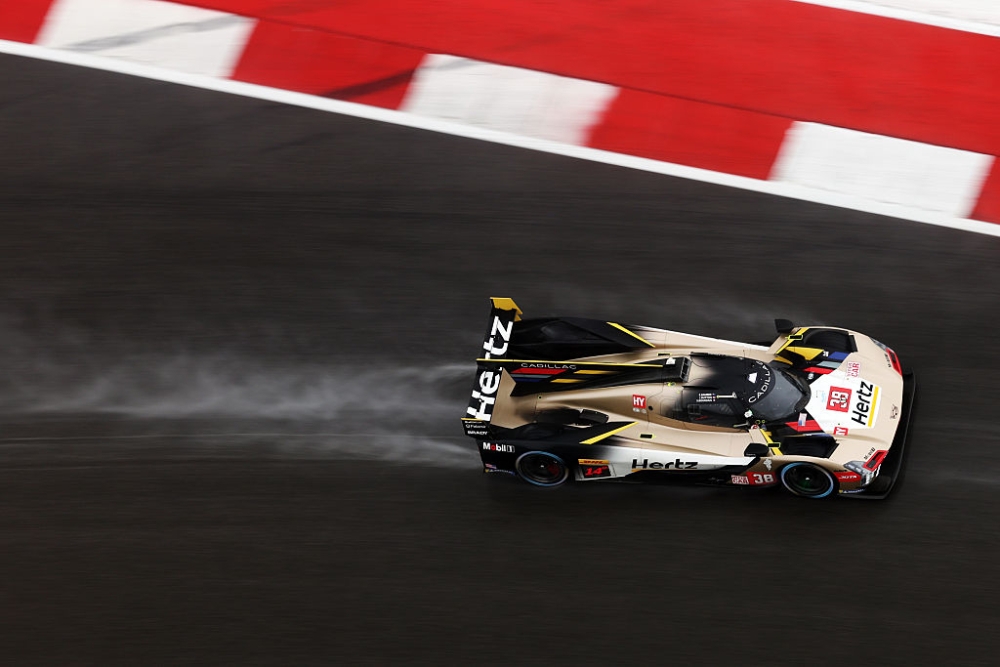The potential for a shift in the FIA WEC’s Hypercar class from a ruleset that welcomes both LMH and LMDh-spec prototypes to one that is scaled back to a single platform has become the talking point in the paddock in recent months.
This push, to introduce a streamlined set of regulations by the end of the decade, is gaining significant momentum, alongside further changes to the Balance of Performance system. But why now, and what does it mean for the future of the WEC’s premier category?
On and off the record, manufacturers have gradually become more vocal in support of changes to the rules and regulations this season. It stems from frustrations attached to the top category’s revamped Balance of Performance system.
The new methodology, which sets the BoP for races outside of Le Mans by using data gathered from a rolling average over multiple races, taking into account both a car’s 10 fastest laps and the average of its quickest 60 percent of race laps, has received its fair share of criticism, from manufacturers, teams, drivers, media and fans since it debuted.
The intention of BoP in the top class was to create close, hard racing, without serving as a crutch to lean on for factories with a substandard car. Yet all too often this year – even the rulemakers would quietly agree – it has failed to meet its objectives.
The problem is that by its very nature, BoP cannot keep everyone happy, even though it exists principally to reduce costs and make the competition ‘fairer’. Someone always has to finish at the back, and after six, eight, 10 or 24 hours, the larger the field, the more difficult it is to manage aspiration and expectation. You could argue, effectively, that the job of the FIA in balancing such a deep field with such variety in car types has become an almost impossible task in the current era.
Thus, the teams up and down the pit lane that have struggled to perform consistently, off the record (due to the rules in place that prevent public statements and lobbying), clearly feel the levee has broken, and something has to give. What the scope and scale of the change looks like is still up for debate, but the picture is becoming clearer as we move towards the end of the 2025 season.
The most pressing topic concerns the implementation of Balance of Performance, as well as its short and long-term future. In recent months, suggestions were made to RACER that a full overhaul of the current system is being discussed, potentially to a simplified solution in time for the 2026 season.
But as Lone Star Le Mans approached, the potential for BoP to be scrapped entirely in favour of something new to balance the LMDh and LMH cars currently racing by the end of the decade also entered the chat.
What could this look like? Off the bat, RACER understands that a hard cost cap, similar to Formula 1, has not been on the table in discussions between the factories and rulemakers.
Instead, a manufacturer source told RACER, “one idea could be to find a smart way on the Joker side to say that the quickest car cannot be developed, while the slower manufacturers are invited to spend Joker upgrade tokens to get closer. I think this framework, on paper, is possible. Some of us would be happy to race without BoP, to keep costs under control. It’s possible by 2030 to get rid of it (BoP), but it’s a long way to go.”
Another senior paddock source added, “I am hearing about a success ballast kind of thing? Whether that’s the fastest car be frozen and the slowest car be given jokers, which would be slow, or a faster weight system. This is because what we’ve tried in balancing two platforms, we tried, but we failed. That’s clear.”
A meeting in Paris on September 12th, which saw the FIA, ACO, IMSA and each of the manufacturers involved come together, laid out some important principles for the future.
It was a meeting without an agenda, which was more of an open forum. It has been described to RACER as “overwhelmingly positive” by a key voice, with the vast majority of the manufacturers involved apparently seeing eye-to-eye on the key topics that were brought up and willing to compromise in key areas.
A vote was cast on BoP’s future, and all but one of the Hypercar manufacturers voted in favour of keeping it going forward. Any plan to scrap it entirely has been shelved, for now at least.
With that in mind, it appears that tweaks will be made to the system for next year, but RACER believes they will not be sweeping.
The other key topic discussed was the potential for a single platform to be introduced to Hypercar. It’s a potential solution that has morphed from what appeared to be a pipe dream when Porsche first discussed it with reporters back in Qatar, to something that now seems inevitable.
